2017 Kia Optima: A car doesn’t have to be sporty to be appreciated
On Saturday the 11th of November I collected my new Kia Optima. With only 9 miles on the odometer and plastic still covering the HVAC controls and seatbelts it’s safe to say that I couldn’t possibly get a car any newer than this without stealing one directly from the production line in Korea.
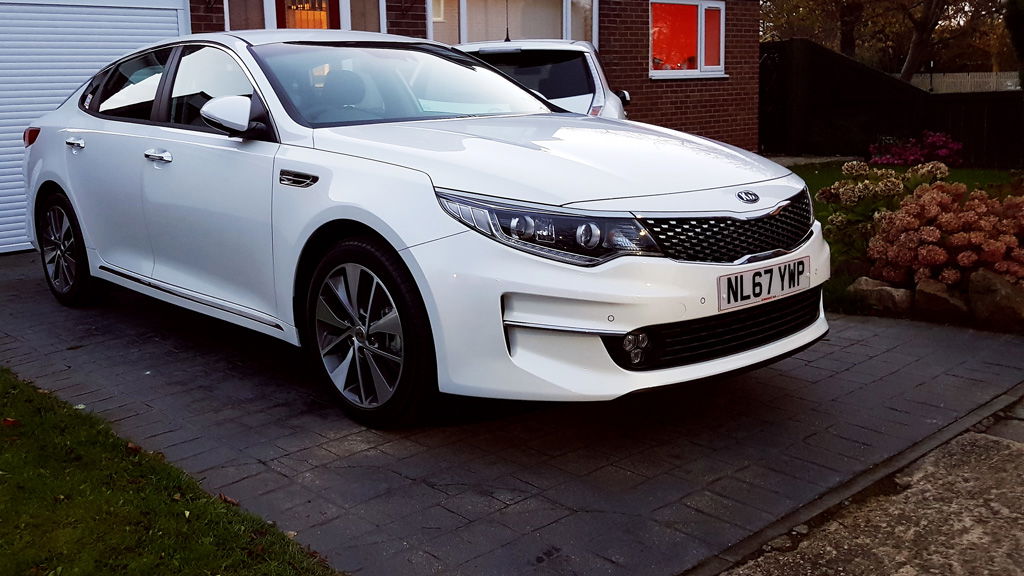
On Saturday the 11th of November I collected my new Kia Optima. With only 9 miles on the odometer and plastic still covering the HVAC controls and seatbelts it’s safe to say that I couldn’t possibly get a car any newer than this without stealing one directly from the production line in Korea.
Parting with my Mustang was difficult. The radio playing “Don’t Cry” by Guns and Roses as I pulled into the dealership certainly didn’t help. Sign here, initials here, sign here once more and here are your keys, sir. Posing for one final photo with the pony, whom I finally christened “Micky the Mustang”, I clapped eyes on my far more sensible family executive.
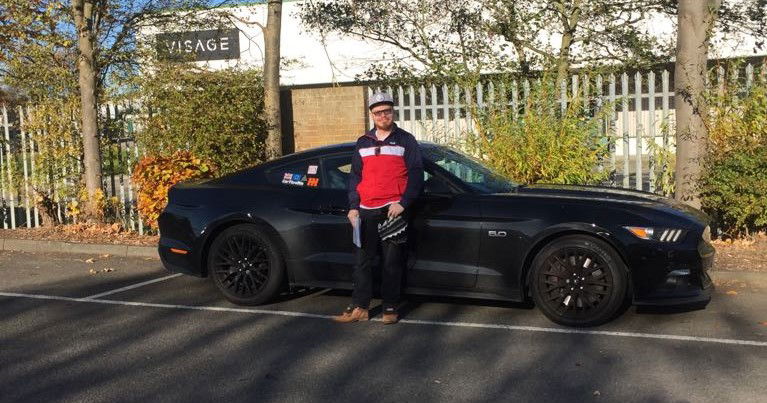
My initial impression of the Optima? Overwhelmingly positive, much to my own surprise. The car is big and beautifully sculpted, and in a segment dominated by bland boxes such as the VW Passat and the BMW 520d near exclusively in poverty-spec, the Kia’s star-stamped grille and chrome accent running the length of the roof do a lot to set it apart from the rest. An attractive wheel design covered in Michelin Pilot Sport 3 rubber and a good, meaty set of brakes tucked behind them give it a purposeful stance, even if the engine can’t cash the performance cheques the body is writing. The only car in this class to match it on style would be the Mazda 6 in SportNav trim or higher, and that is high praise indeed.
Though, it isn’t the styling alone that impresses me, even small items such as the key feel reassuringly heavy and solid as if it’s filled with a lump of lead. The Optima’s individual body panels all line up beautifully with shut-lines for the doors and boot being of particular merit. The chrome accents and various LED lights dotted around my mid-level “3” trim all sit flush and make the car appear more expensive that it is. It’s all these small elements that come together to make one cohesive whole.
Pulling open the driver’s door really put a fine point on the build quality, being hefty and solid. The locking mechanism doesn’t sound as if it’s wedged inside a tin can as was the case with my previous Ford, and the handles themselves are tight in their movement. Even closing the door was a smooth ordeal, with a reassuring and very German “thud” to accompany it. It’s a solidly built piece of machinery that is easily up there with the BMW 3-series I test drove in 2016, if not better. It’s no match for a 5-series, though, the near £15,000 difference in price with a similar spec 520d M-Sport sees to that.
More good news awaited me inside. Sure, the gloss black centre console has made stowing a microfiber cloth in the armrest a necessity, but that aside the interior does a damn good job of impersonating said 5-series with its horizontal, stacked button layout. Unlike the 5-series though, the buttons are larger than you expect, and the inclusion of a touch screen makes the centre console a far less cluttered affair since it negates the need for a dial. Functions are easy to find by touch alone, and the quality of the button mechanisms closely matches the Bavarian. Responsive, dampened and pleasingly tactile.
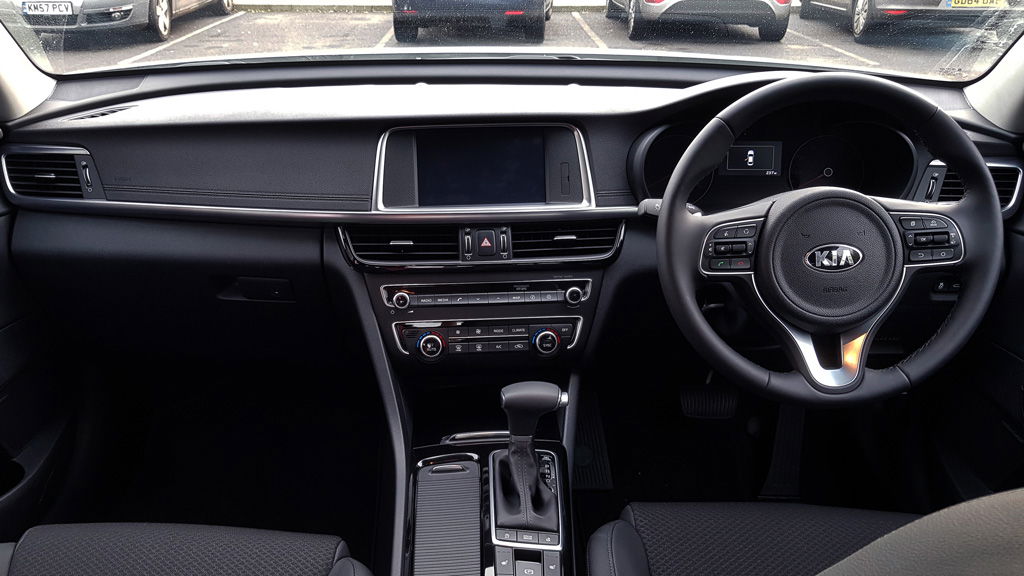
Soft touch plastics cover the majority of the cabin, including the rear doors (which is more rare than you’d think in a typical family car), and the overall theme is of the “less is more” school of design. The cabin is a combination of black and, err… more black, but neat satin chrome touches and small visual cues, like faux stitching moulded into the plastic and a textured accent around the infotainment unit, help elevate it into an effortlessly classy affair. My brother’s Mercedes CLA estate looks overly fussy and, dare I say it, a bit cheap in comparison, especially the cloudburst of buttons under the poorly thought out LCD display jutting out of the dash.
The space inside is also truly cavernous, easily on par with the Skoda Superb. A 193cm colleague of mine was more than comfortable in the front passenger seat, and with the seat still in his position he fit behind it with knee room to spare, although his head was brushing the headlining due to the Optima’s fastback inspired styling.
It’s a shame, then, about the gear shift paddles attached to the wheel. They still feel great with a satisfying click, they’re not aluminium but a dense painted plastic which still looks perfectly acceptable, but they’re too short, so you need to glue your hands to the nine-and-three position in such a way that it’s a gamble if you’ll pull the paddle or spray your front windshield.
Of course, the luxury feeling had to come down even further eventually, and the lower door cards and the lowest reaches of the dash eschew soft touch materials for solid-as-a-house-brick plastic. Granted, these are in areas that you will never touch and barely see, aside from the glovebox, but it does remind you that you’re in a Kia, not a Lexus.
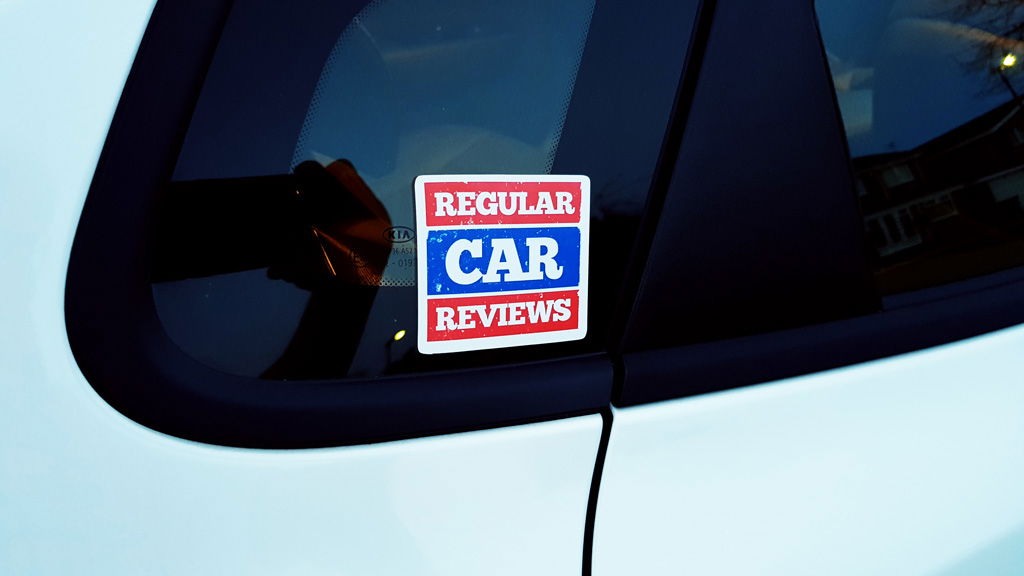
Add in the phenomenal 590w, 10-speaker sound system that refuses to distort even at high volumes, the well sized and heated steering wheel, memory and heated seats, responsive touch screen and buttery smooth infotainment system with standard Android Auto and Apple Car Play, and you have a recipe for one of the best cars Europe has never heard of. For £25,600 it’s the bargain of the century. Why more people don’t buy one shall remain a mystery to me. Even the Skoda Superb, despite being billed as one of the cheaper cars in its category, will set you back nearly £31,000 in SE Tech trim when a few option boxes are ticked to bring it up to the same equipment level as the Optima. Spec the Optima with a manual and any other colour than brown (yes, Brown is the only free colour), and you’ll walk away paying a tiny £24,180 – the only car to truly beat it on price is its sister car, the Hyundai i40.
Driving is a bit of a mixed bag, though. The in-house developed 7-speed dry dual clutch transmission is smooth and unobtrusive. Under normal driving it knows exactly what gear it needs to be in and changes are rapid. Manual mode completely overrides it (except at the red-line and way down at the bottom end to stop the engine from stalling), making those paddles behind the wheel a useful addition, especially if you need a bit of engine breaking down a large hill. If you try to skip two gears at a time (from 5th to 3rd, as an example) the unit hesitates slightly, but that’s the nature of any dual clutch transmission. Under hard acceleration and kick down you can feel it slam shifting itself with a bit of a shunt, which dulls the experience somewhat, but with an engine like this you’ll not be anywhere near the redline 99% of the time you’re driving.
Speaking of engines, it’s a shame we don’t get the 1.6L Turbo in the UK as that would’ve been my motor of choice. Instead, the UK gets one engine option, a 1.7L CRDI Diesel with 141PS and 340Nm of twist. Reaching 62mph from a dead-start is a time-consuming affair, taking the best part of 10.6s – but once moving it has a lovely amount of power between 1750 and 3000rpm, it certainly doesn’t make the car feel underpowered and overtaking is effortless in lower gears, 3rd is especially fruity. 50 to 70, probably the most important speed range for a car in this class in Europe, is painless. Put the box in manual mode and ram your foot to the floor, and you’ll be heading toward the horizon faster than you think. I’m having to use the speed limit function quite frequently as the buttery smooth progress has left me illegally speeding on more occasions that I like to admit.
Since the Hyundai U2 Diesel engine is now quite old and overbuilt to an insane degree, it’ll take to tuning very well, even a modest tune off-the-shelf you can install in your driveway can push up to 25% more power out of it to a healthy 176PS and 430Nm of the twisty stuff whilst also increasing its powerband.
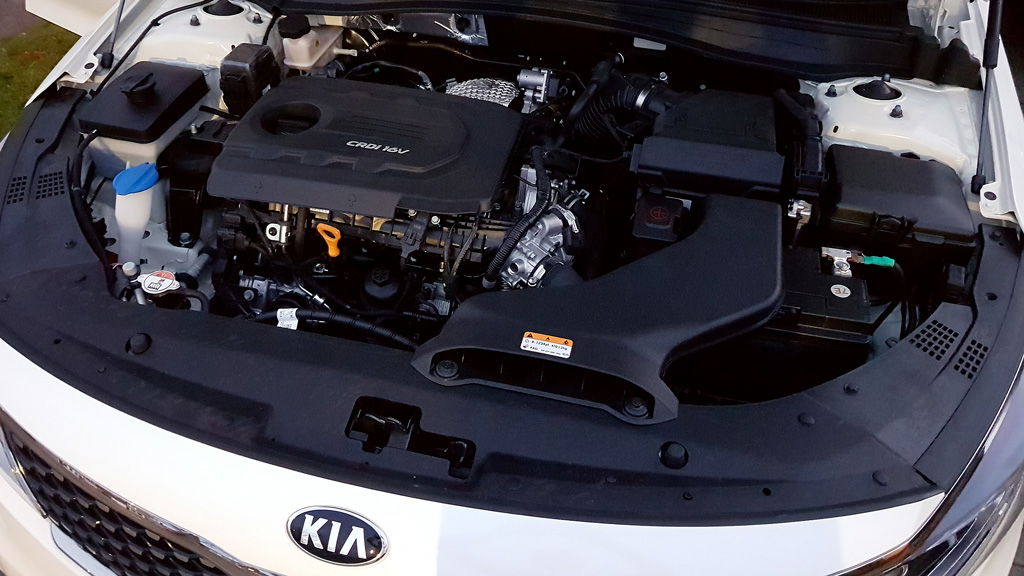
However, if you are anywhere below 1500rpm the Turbo lag will be screamingly obvious. It’s a large turbo and needs time to spin up. Above 3000rpm the car starts to run out of steam, so performance is a bit of a mixed bag until you figure out how to tickle the engine in the right places or tune it out. The transmission keeps you within the sweet spot amicably, it’s only in Eco mode where lag exists as it kicks into a higher gear than is strictly necessary. It does its job of sipping fuel, though.
Despite Kia’s claims of improvements to the chassis and steering, this is still not a full-stroke sports saloon. I prefer it to a Ford Mondeo that is now a bit soft and jittery thanks to its American influence (it’s a hatchback Ford Fusion), but a Mazda 6 still takes the prize due to the better judged steering weight compared to the Kia, which is a touch too light.
The steering is, thankfully, pin sharp. Even dead centre a slight jiggle will make the car dart left or right. Like other cars in this segment though, the steering in numb. You rely on the chassis to tell you what the front wheels are doing, but the Optima’s chassis is quite communicative thanks to the increase in high strength steel over the 3rd generation. The suspension is also tuned more for comfort, absorbing bumps and imperfections wonderfully but in tight corners it causes the car to lean even moderate speeds. The seats are also built for comfort, so you’ll be sliding into the doors very quickly with their lack of bolstering.
On a wider road with larger, sweeping corners, the Optima can be entertaining on the right tyres. The grip levels offered by the Michelin rubber on my car can give you warm-hatch style cornering giggles. I don’t think I’ll be bored in this car heading to Edinburgh along the twisty coast road.
The brakes are shocking, as in they are pretty darn powerful for the class. Pedal travel is sadly a little inconsistent, being soft at the top and heavy with a lot of brake force applied after the opening salvo. Despite the car having a max kerb weight of 1720kg there is enough stopping force to throw the car forward. Emergency stops won’t be an issue and I’ve not yet noticed any fade.
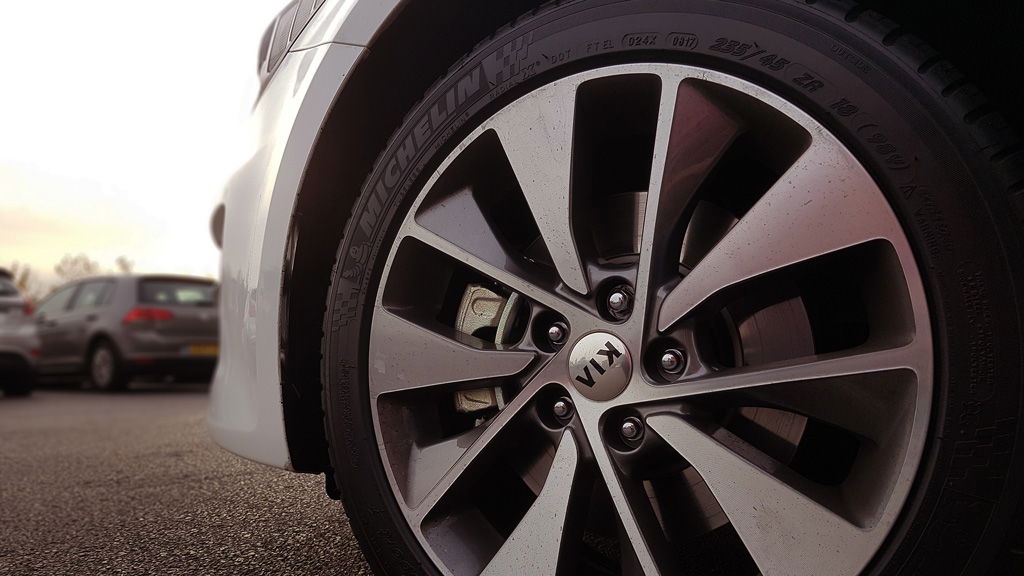
Fuel economy for a car of this size is excellent. I’m stuck in a lot of traffic on the daily run; creeping forward and coming to a complete stop happens more frequently than actual, helpful forward progress. It takes close to an hour to travel a grand total of 16 miles. Even in a situation such as that I still managed an impressive 45.9mpg this morning (38.2mpg USA, 6.2L/100KM). With three adults and a baby in the car on Sunday just over 52mpg was achieved with little effort when the road opened-up (44mpg USA, 5.3L/100km). Kia claim 61.4mpg combined and if I was in a position to go on a longer journey, I believe it could eventually hit that target. Mid to high 50s are unquestionably achievable. Given I have less than 500 miles on the clock I expect this average to increase as the engine beds in.
Even with all the praise I can throw at the car there are some niggles that I can leverage toward it; most notable of all are the little electrical inconsistencies. I can set the car to Sport, Normal or Eco mode with a small button below the gear selector and, upon restarting the car the next morning, it will still be in that specific drive mode. This is a nice touch. It’s the same with the Lane Keep Assist System (LKAS), it will remember if you switched it on or off the next time you start the car.
It therefore comes as a surprise that Auto Hold, which holds the car stationary with the rear brake lights illuminated even when you’re in Drive, is always off by default. I’m not sure why you’d want this to ever be switched off as it is one of the most useful features I have ever used in a car. Each time you start the car you need to press and hold the button to reactivate it. Engine Auto Start/Stop works in a similar manner, being always on by default. Given the type of traffic I’m usually stuck in I’d want this switched off by default.
Like other cars in the segment there is a shocking lack of engine management information. Coolant temperature has its own, albeit vague, dial on the dashboard, and even then I’m pretty sure its digital masquerading as analogue. Head temperature, fuel ratio, battery voltage et al are all missing. As Auto Stop/Start requires a certain number of specific conditions to be met, it’d be nice to reference them in some way. This morning it worked fine, yesterday it refused to activate. Was the engine too hot? Too cold? Was the outside temperature too low? Battery voltage low? Did a butterfly flap its wings in China? I simply don’t know. I now carry a cigarette-port volt meter in the car so can at least check the battery. 12,7v with the engine off, if you’re wondering.
So, with all things said and done, do I regret trading in a Mustang GT for an Optima? Whilst I will miss the head turning styling of the Ford and its searing performance, I’ve come to realise that a car doesn’t have to be overtly sporty for you to appreciate it. The Mustang was my dream car and I enjoyed (almost) every moment with it, but it was a toy and not a daily driver for longer commutes. The Optima is nowhere near as entertaining to drive as the big Ford, but in every other measureable way it is the superior product. Even in the UK where sales of big saloons collapsed in the early 2000s, competition in the D-Segment Executive market is tight. As I stated previously, I’m unsure why people aren’t buying the Optima over the competition. However, that appears to be changing with the increasing number of Optima Sport Wagons on the road, and continental Europe receiving a 244hp GT model that is allegedly quite a tidy thing to drive.
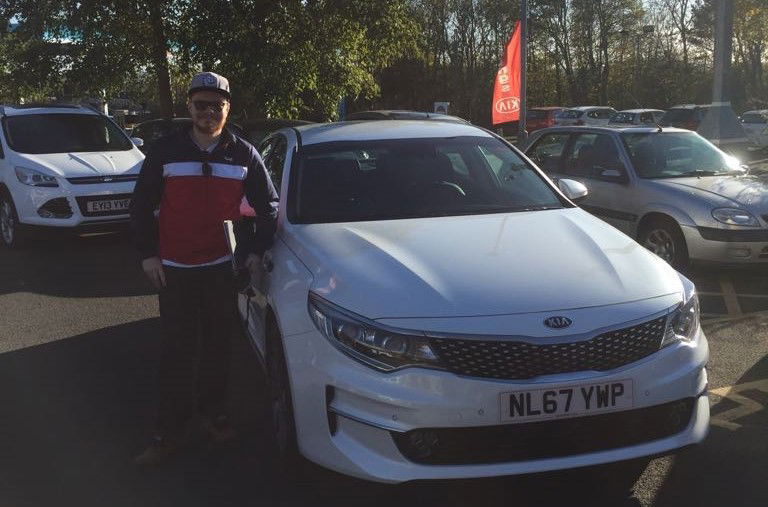
Pros
- Quite an attractive beast
- Built like a tank
- Great real-world fuel economy
- Smooth drivetrain in 99% of situations
- A lot of car for not a lot of money
- Comfortable and quiet
- Power once moving is good
- Well-appointed and cavernous interior
- Excellent sound system
- Pin-sharp steering
- GT-like cruiser dynamics can be fun on the right rubber
- Seven-year warranty
- Excellent brakes
- Capacious boot
Cons
- Steering is numb
- Overall performance is tepid
- Not a sporting car
- Badge snobs will drive you insane
- Not much else
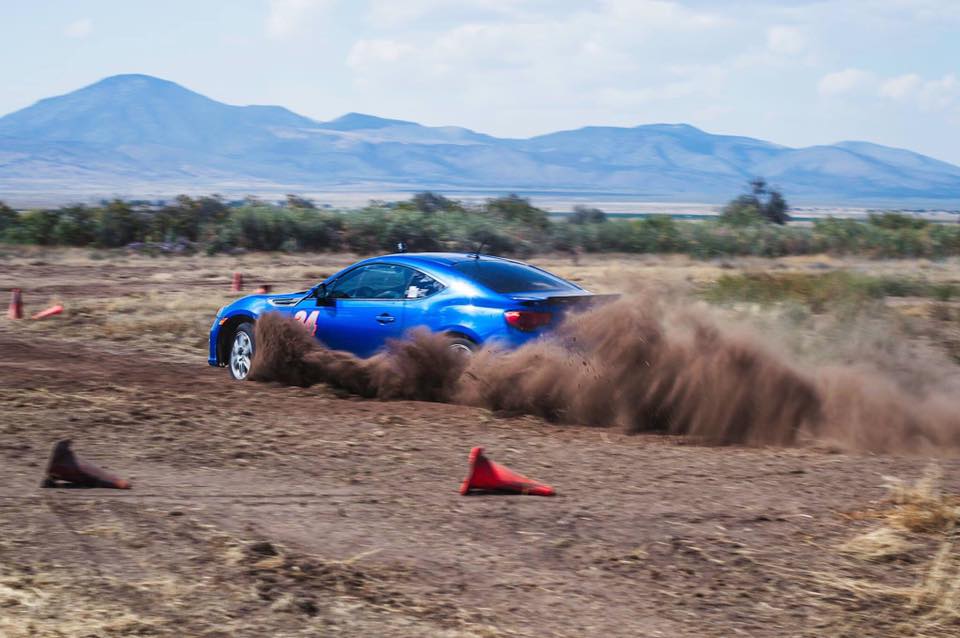

Comments
Always thought the Optima was a beautiful car. Nice, left-field purchase :)
econoboxes will always be the best kind of car though
The reason more people don’t buy more of them is for 26k I could get 2 E60 m5’s, an Isf and fuel for a long time, etc etc second hand. That’s the enthusiast gone. Then it’s the people who want something cheap to run, they will either get something small, or something also 2nd hand. That leaves a very small percentage and those people are probably choosing them as company cars or as you said would rather pay extra for the badge.
This is great writing, quality review.
Its great to hear you’re enjoying it.
Skoda superb is still better,it has no pretense all luxury and is huuuuuuuuuuuuuugeeeee.And even the interior (Quality+features+comfort) on the superb out classes this car.The optima is a nice car(And congrats) but I (personally) prefer the Superb.
I’ve got a friend that has the Optima equipped with the 2.0 GDI turbo engine, that thing goes like STINK
The real question is
You owned a Mustang, how come the Stinger wasn’t your choice?
Let me just say that my family owns a 2006 Mazda 5 minivan and it sports many of the qualities that you mentioned here. I’m not by any means trying to say they’re the same car, but it feels nice to know that our car is really above average. The 140hp turbo-diesel engine comes to life from 2000 all the way up to 4000rpm and it pulls very well. It doesn’t feel the same as 140hp in a different car. The minivan weighs around 1600kg empty and the FF setup means it’s not really a cornering machine but it never really loses grip in the corners, even at higher speeds. A very stable, spacious and fuel efficient (5-7l/100km) vehicle overall, and if you end up having to transport more people than your Optima can handle, a minivan should really be an option, especially a Mazda 5 or a Corolla Verso.
I learned to drive stick in a 2013 Kia Soul.
That car was so wicked fun to drive I swear.
Nice post.
With a set of coilovers and a few other toys it can be really fun. If u want check out my one on the garage
Pagination